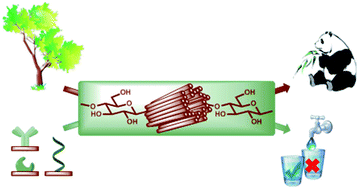Cellulose: from biocompatible to bioactive material
Abstract
Since the papyri, cellulose has played a significant role in human culture, especially as paper. Nowadays, this ancient product has found new scientific applications in the expanding sector of paper-based technology. Among paper-based devices, paper-based biosensors raise a special interest. The high selectivity of biomolecules for target analytes makes these sensors efficient. Moreover, simple paper-based detection devices do not require hardware or specific technical skill. They are inexpensive, rapid, user-friendly and therefore highly promising for providing resource-limited settings with point-of-care diagnostics. The immobilization of biomolecules onto cellulose is a key step in the development of these sensing devices. Following an overview of cellulose structural features and physicochemical properties, this article reviews current techniques for the immobilization of biomolecules on paper membranes. These procedures are categorized into physical, biological and chemical approaches. There is no universal method for biomolecule immobilization. Thus, for a given paper-based biochip, each strategy can be considered.

- This article is part of the themed collection: 2014 Journal of Materials Chemistry B Hot Articles

 Please wait while we load your content...
Please wait while we load your content...